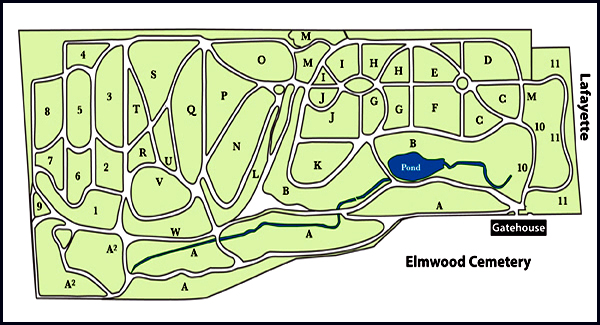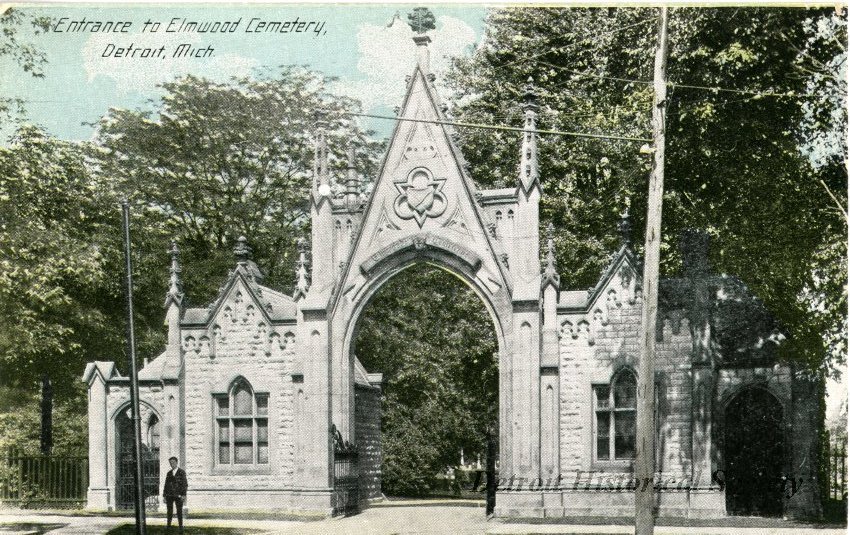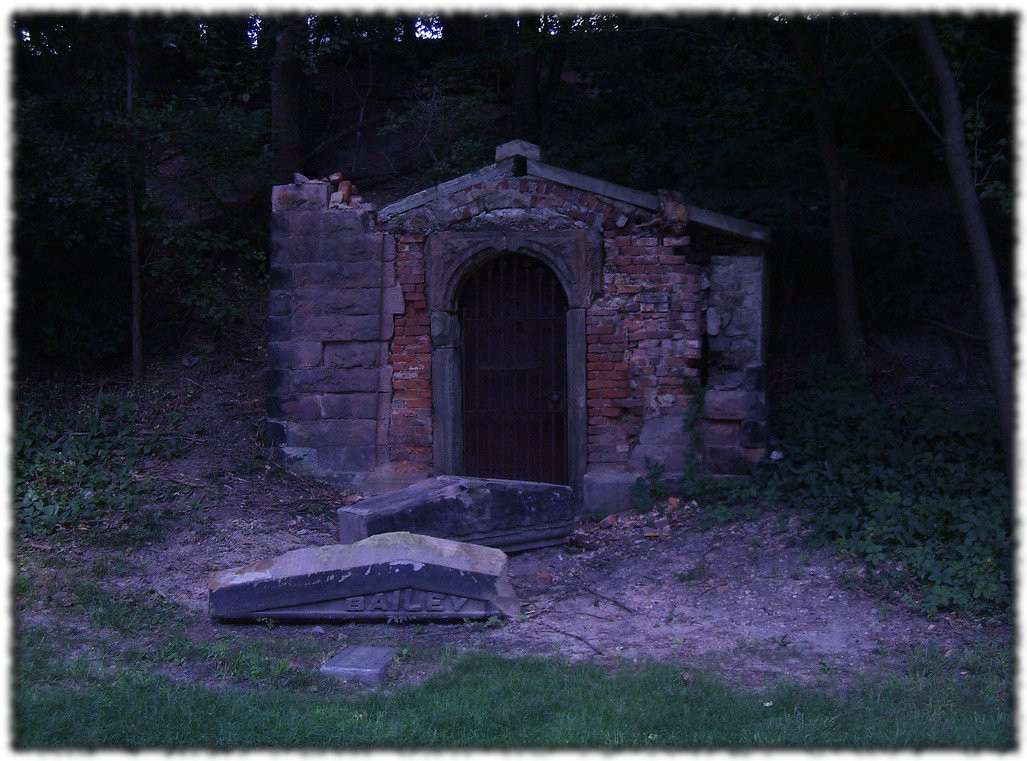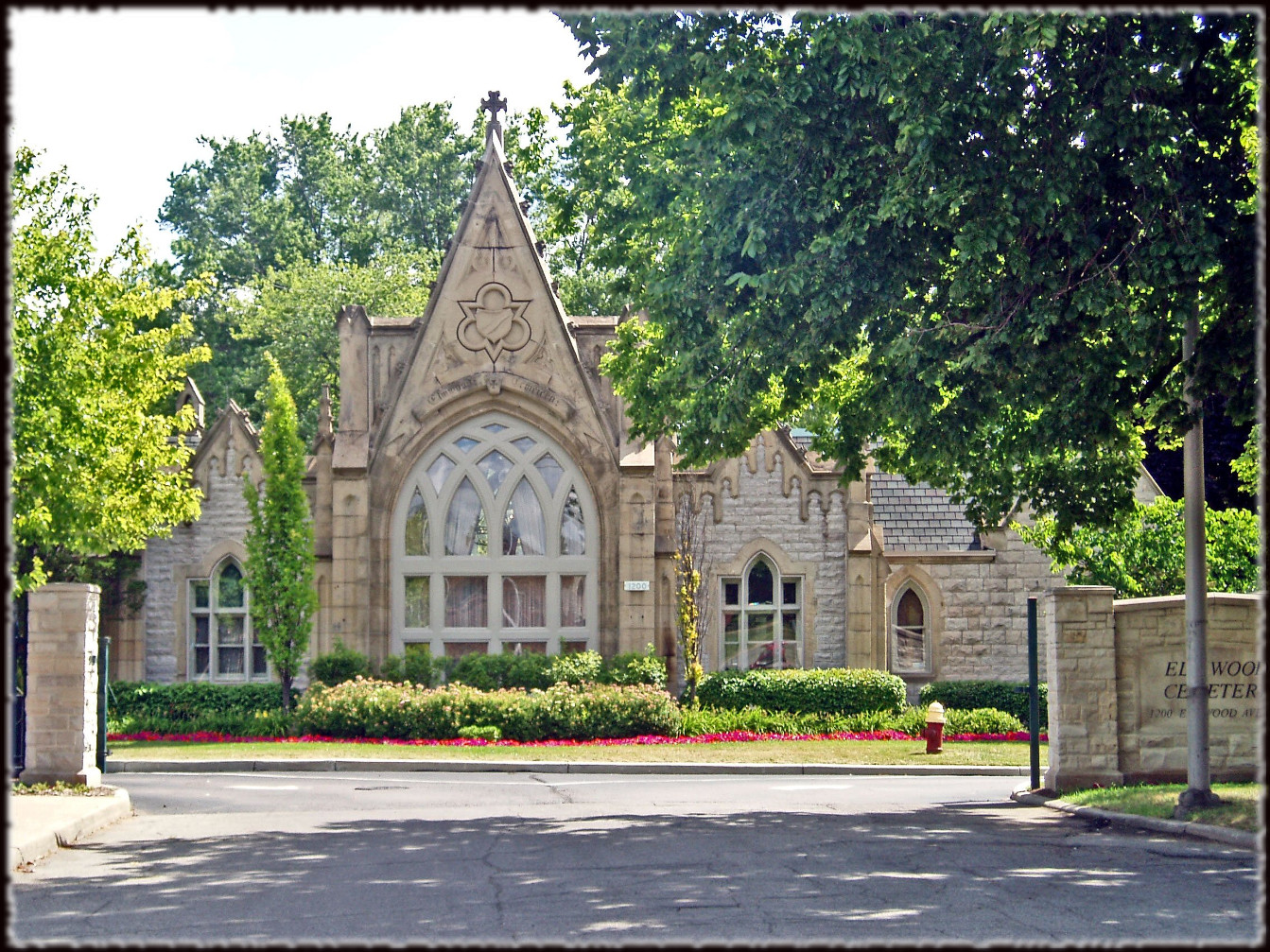Elmwood Cemetery: Difference between revisions
| (15 intermediate revisions by the same user not shown) | |||
| Line 13: | Line 13: | ||
<br> | <br> | ||
<br> | <br> | ||
The cemetery was dedicated October 8, 1846 as a rural cemetery and incorporated as a non-profit corporation by Special Act 62 of the Michigan Legislature on March 5, 1849. The first burial occurred three weeks prior to the dedication on September 10, 1846. Founded by some of early Detroit's leading residents, Elmwood originally covered 42 acres (170,000 m2). Over time, it expanded to encompass 86 acres (350,000 m2) and is the final resting-place of many notable Detroiters as well as ordinary citizens. In 1850, however, the cemetery became slightly smaller when Temple Beth El purchased one-half acre to establish what is now Michigan's oldest Jewish Cemetery. The State of Michigan designated it as a State Historic Site in 1975. | The cemetery was dedicated October 8, 1846 as a rural cemetery and incorporated as a non-profit corporation by Special Act 62 of the Michigan Legislature on March 5, 1849. The first burial occurred three weeks prior to the dedication on September 10, 1846. Founded by some of early Detroit's leading residents, Elmwood originally covered 42 acres (170,000 m2). Over time, it expanded to encompass 86 acres (350,000 m2) and is the final resting-place of many notable Detroiters as well as ordinary citizens. In 1850, however, the cemetery became slightly smaller when Temple Beth El purchased one-half acre to establish what is now Michigan's oldest Jewish Cemetery. The State of Michigan designated it as a State Historic Site in 1975. | ||
Elmwood was the first fully integrated cemetery in the Midwest. A short distance from downtown Detroit, Elmwood continues to serve residents of all ethnic backgrounds and religious beliefs. | Elmwood was the first fully integrated cemetery in the Midwest. A short distance from downtown Detroit, Elmwood continues to serve residents of all ethnic backgrounds and religious beliefs. | ||
| Line 27: | Line 26: | ||
== Bailey Mausoleum == | == Bailey Mausoleum == | ||
[[]] | [[File:Bailey Mausoleum.jpg]] | ||
<br> | <br> | ||
<br> | <br> | ||
''"Sadly, many of these entombment sites are in disrepair and completely deserted. This is the fault not so much of the cemetery today but of the age of some of its tombs, the materials used in their construction, and weather. In addition, many of the families had died out of Detroit society, leaving no trace of descendants. Close to the pond's outlet, the Bailey mausoleum began to deteriorate the day the sandstone structure was completed. Now, a century later, its marble facade balances on crumbling cement. Entrance to the tomb is denied by rusted hinges that long to grasp a careworn door. What was once a family shrine now resembles the opening of an abandoned mine. One can imagine the beauty of this sanctuary only by comparing its appearance today with a photo taken in 1889."'' -- '''''Elmwood Endures: History of a Detroit Cemetery''''' By Michael S. Franck (1996) | |||
<br> | |||
<br> | |||
<span style="color:#008000;"> ''This is where Loren and Tremen went to sleep on January 14th of 1954.'' | |||
== Sources == | == Sources == | ||
| Line 35: | Line 38: | ||
https://detroithistorical.org/learn/encyclopedia-of-detroit/elmwood-cemetery | https://detroithistorical.org/learn/encyclopedia-of-detroit/elmwood-cemetery | ||
https://books.google.com/books?id=Q0KBYj8v_ZMC&pg=PA28&lpg=PA28&dq=pontiac+valley+elmwood&source=bl&ots=OIGPosRy5L&sig=camvN5nAcIE0h9teHPhu5Rvudlo&hl=en&ei=LedcS7L7EJHk8Qb9gYH7BA&sa=X&oi=book_result&ct=result&resnum=5&ved=0CBUQ6AEwBA#v=onepage&q=pontiac%20valley%20elmwood&f=false {&} | |||
https://www.detroityes.com/mb/showthread.php?4317-The-Ruins-of-Elmwood-Cemetery | |||
https://www.flickr.com/photos/dvd_garvin/albums/72157606424343186 | |||
https://www.google.com/search?tbm=isch&source=hp&biw=1903&bih=927&ei=s-gnXYMi07u0Bsb7ipgC&q=elmwood+cemetery+detroit+michigan&oq=Elmw&gs_l=img.1.0.35i39l2j0l8.2087.4366..7484...0.0..0.126.501.3j2......0....1..gws-wiz-img.....0.h2H92M8Fuo8#imgrc=_ | |||
---- | ---- | ||
<br> | <br> | ||
<br> | <br> | ||
---- | ---- | ||
Latest revision as of 19:49, 19 September 2019
Introduction

Elmwood Cemetery in Detroit is one of Michigan's most important historic cemeteries. Located at 1200 Elmwood Street in Detroit's Eastside Historic Cemetery District, Elmwood is the oldest continuously operating, non-denominational cemetery in Michigan.
History

The cemetery was dedicated October 8, 1846 as a rural cemetery and incorporated as a non-profit corporation by Special Act 62 of the Michigan Legislature on March 5, 1849. The first burial occurred three weeks prior to the dedication on September 10, 1846. Founded by some of early Detroit's leading residents, Elmwood originally covered 42 acres (170,000 m2). Over time, it expanded to encompass 86 acres (350,000 m2) and is the final resting-place of many notable Detroiters as well as ordinary citizens. In 1850, however, the cemetery became slightly smaller when Temple Beth El purchased one-half acre to establish what is now Michigan's oldest Jewish Cemetery. The State of Michigan designated it as a State Historic Site in 1975.
Elmwood was the first fully integrated cemetery in the Midwest. A short distance from downtown Detroit, Elmwood continues to serve residents of all ethnic backgrounds and religious beliefs.
Elmwood's park-like grounds containing a gently-flowing stream and low hills were designed in 1890 by landscape architect Frederick Law Olmsted. They are based on the design of Mount Auburn Cemetery in Cambridge, Massachusetts.
The Gothic Revival chapel on the grounds was constructed in 1856. It underwent renovation in 1961 and was destroyed by fire in 1976. With a public outpouring of support, the building was restored and continues to play an important role.
In 1874, the State of Michigan purchased a section to inter Civil War veterans and in 1876, the Firemen's Lot was dedicated with a monument that depicts firefighting equipment and the fire hall that once stood at the corner of the present Renaissance Center on Randolph and Jefferson Avenue. The Civil War section holds 205 graves today.
The Gothic Revival gatehouse was added in 1876 and in 2003 its portal was closed and filled with a reception room designed to harmonize with the historic architecture. The gate was closed because it was unable to accommodate larger vehicles which needed access to the grounds.
Bailey Mausoleum

"Sadly, many of these entombment sites are in disrepair and completely deserted. This is the fault not so much of the cemetery today but of the age of some of its tombs, the materials used in their construction, and weather. In addition, many of the families had died out of Detroit society, leaving no trace of descendants. Close to the pond's outlet, the Bailey mausoleum began to deteriorate the day the sandstone structure was completed. Now, a century later, its marble facade balances on crumbling cement. Entrance to the tomb is denied by rusted hinges that long to grasp a careworn door. What was once a family shrine now resembles the opening of an abandoned mine. One can imagine the beauty of this sanctuary only by comparing its appearance today with a photo taken in 1889." -- Elmwood Endures: History of a Detroit Cemetery By Michael S. Franck (1996)
This is where Loren and Tremen went to sleep on January 14th of 1954.
Sources
https://en.wikipedia.org/wiki/Elmwood_Cemetery_(Detroit,_Michigan)
https://detroithistorical.org/learn/encyclopedia-of-detroit/elmwood-cemetery
https://www.detroityes.com/mb/showthread.php?4317-The-Ruins-of-Elmwood-Cemetery
https://www.flickr.com/photos/dvd_garvin/albums/72157606424343186
